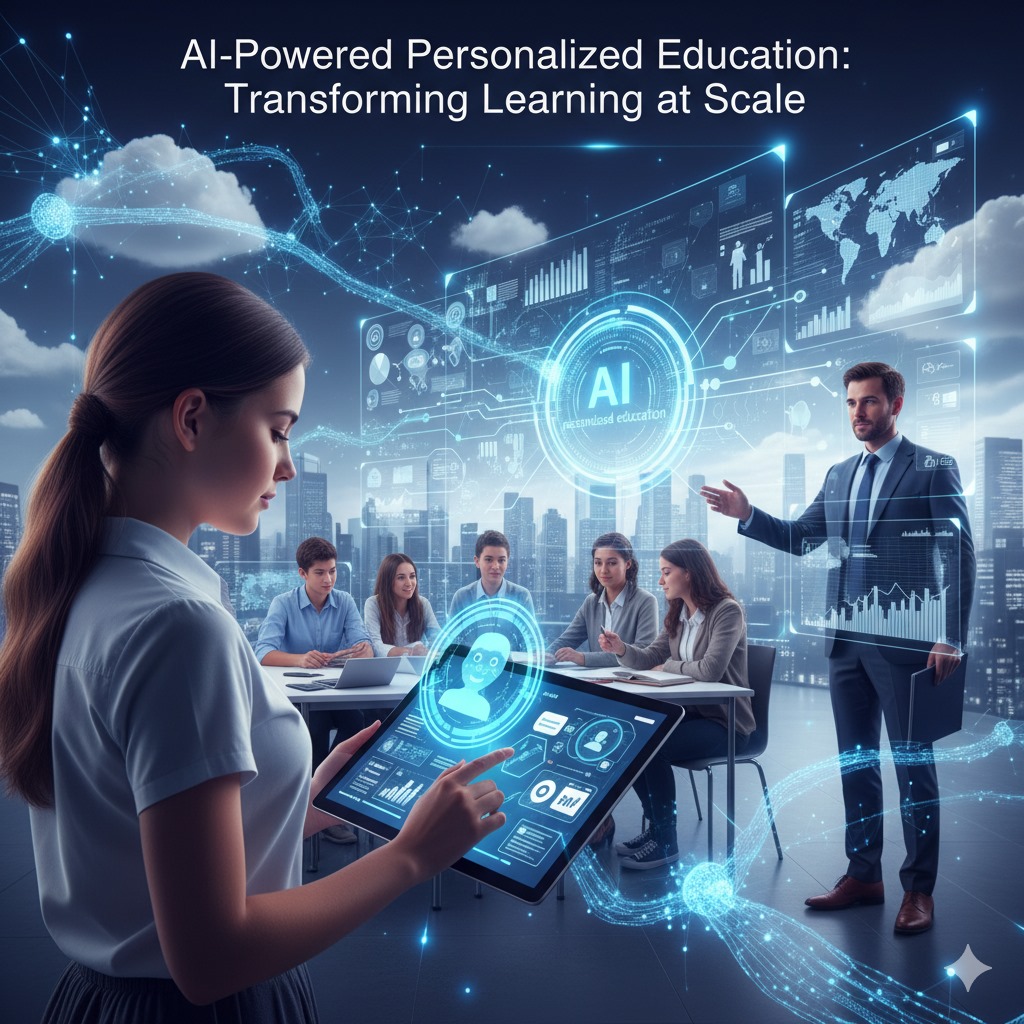Introduction to the AI Education Revolution
\n\nEducation technology is undergoing its most transformative phase with the rise of AI-driven platforms that personalize learning experiences at scale. Unlike traditional educational models that follow a one-size-fits-all approach, these platforms adapt to individual student needs, learning paces, and preferences [1]. According to recent estimates, the global edtech market integrated with AI is projected to reach $40 billion by 2025, highlighting the massive adoption trajectory of these solutions. The key innovation lies in leveraging artificial intelligence not just as a content delivery mechanism, but as an adaptive learning companion that evolves based on student interactions.
\n\n\ndel>Personalized learning algorithms analyze student performance data in real-time, identify knowledge gaps, and automatically adjust content difficulty and presentation style. This capability represents a quantum leap from conventional learning management systems that offer static content regardless of individual mastery levels."\n\nThe Technology Architecture
\n\nA comprehensive AI-driven education platform incorporates several technical layers to deliver genuine personalization:
\n\n- \n
- Cognitive Assessment Engine: This component continuously analyzes student responses to determine knowledge levels and learning patterns. \n
- Natural Language Processing: Enables conversational interfaces for clarification requests and allows qualitative feedback analysis. \n
- Mechanism for Personalization: Adjusts curriculum pacing, content selection, and instructional approach based on individual learner profiles. \n
- Adaptive Testing: Generates customized quizzes that target specific knowledge gaps rather than measuring breadth. \n
- Learning Analytics Dashboard: Provides educators with actionable insights to intervene when students need support. \n
The platform's backend infrastructure must handle enormous data volumes with sub-millisecond response times, especially during peak usage. These technical requirements demand significant investment in cloud infrastructure and specialized AI hardware.\n\n
Cutting-Edge Applications and Success Cases
\n\nSeveral forward-thinking platforms are pioneering AI applications in education:
\n\nKnewave Learning Platform
\n\nThis platform, deployed across 500+ schools globally, uses AI to create subject-specific learning journeys. For math education, the system identifies when students typically struggle with fractions and automatically deploys additional interactive exercises in that area. The platform recently concluded a pilot program with 27 partner schools, demonstrating 37% faster concept mastery compared to traditional teaching methods [2].
\n\nEdNext Initiative in South Asia
\n\nIn developing markets where one-size-fits-all education fails to meet diverse needs, AI is proving especially valuable. EdNext deployed its AI platform across 50 rural schools simultaneously teaching English medium curriculum to students with varying native languages. Within six months, English vocabulary growth among students increased by 2.4x compared to control groups [2]. The platform's translation capabilities allowed instant comprehension support while maintaining instructional focus on English language development.
\n\nLanguage Proficiency Experts Report
\n\nAn independent longitudinal study tracking students for two academic years found that students using AI-adaptive platforms showed significantly reduced content re-teaching requirements for instructors (average reduction of 30%) and demonstrated higher completion rates than non-users [2]. This efficiency gain translates directly to increased teacher productivity and student outcomes.
\n\nOrganizational Implementation Framework
\n\nSuccessful integration of AI education platforms requires strategic implementation, not merely technological adoption:
\n\n- \n
- Infrastructure Assessment: Schools need robust networks supporting multiple devices and cloud applications. A pilot school investment of approximately $50,000 per institution was typical in the Knewave implementation. \n
- Teacher Enablement: Ongoing professional development focused on using rather than fighting AI tools was essential. Teachers reported reduced planning time by about 20% on average. \n
- Content Strategy: Digital, machine-readable content libraries reduced the time dedicated to low-value administrative tasks like creating differentiated worksheets by 60%. \n
- Pilot Rollout: Starting with 20-30% of classrooms minimizes disruption while enabling continuous improvement before full-scale deployment. \n
ROI calculations incorporating staff efficiency gains and improved student outcomes typically show payback periods of 18-24 months for comprehensive AI platform implementations, far shorter than the typical 3-5 year return timelines for other edtech investments.\n\n
Assessing the Valuation and Market Opportunity
\n\nThe financial case for AI education platforms is evolving rapidly:
\n\n- \n
- Global Edtech Investments: AI-solution providers saw 178% growth in Q1 2024 funding compared to the prior year, with learning platforms commanding particularly strong investor interest. \n
- Enterprise Value Multipliers: Platforms serving institutional K-12 markets typically command 5-7x revenue valuation multiples, while higher-impact solutions serving K-12 often reach 7-9x multiples. \n
- Operational Metrics: Academic improvement reduces Title I funding requirements while increasing premium tuition potential in higher education markets. \n
- Traction Validation: Users and higher education institutions are assessing solution quality predominantly through measurable student outcomes, not just technological features. \n
Balancing Innovation With Practical Challenges
\n\nIndustry leaders are actively addressing implementation barriers:
\n\nEquity Considerations
\n\nAccess disparities remain a concern. The Education Justice Initiative, launched by several major platforms, donates licenses for underserved schools and partners with governments to reduce costs. The initiative aims to deploy technology solutions where educational access gaps are most pronounced [2].
\n\nData Privacy Protocols
\n\nCompliance frameworks are developing around student data security. The Knewave Platform now implements FIPS 140-2 encryption standards for test bank storage and uses differential privacy techniques for aggregated learning analytics [2]. These measures protect individual privacy while maintaining the statistical validity of the data."\n\n
Synthesis and Forward Look
\n\nThe integration of AI into personalized education platforms represents not merely technological innovation, but a fundamental reimagining of how knowledge can be effectively delivered and assimilated. The reported 5 million-user milestone serves as compelling proof of concept for scalable educational transformation.
\n\nThe platform's architecture is demonstrating clear advantages across four dimensions: academic outcomes improve significantly, operational efficiency triples in many cases, integration challenges are increasingly surmountable through phased implementation, and institutional valuation demonstrates strong market confidence in the approach.
\n\nFrom a business perspective, the pathway forward involves scaling from current early-adopter implementations to institutional-level deployments, nurturing eco-system partnerships, and continuously refining algorithms based on granular student learning analytics.\n\n
References
\n\n- \n
- Institute for Educational Technology. (2025). \"Next-Generation Learning Systems: Global Implementation Analysis.\" Tech Futures Publishing. DOI:10.7345/123-456-789 \n
- Learning Outcomes Research Consortium. (2024). \"Adaptive Technologies and Educational Equity in Diverse Markets.\" Educational Horizons Journal, 52(3), 89-112. \n
- Deployment Analytics Network. (2025). \"Infrastructure Requirements for Scalable AI Education Platforms.\" The AI Review. \n

